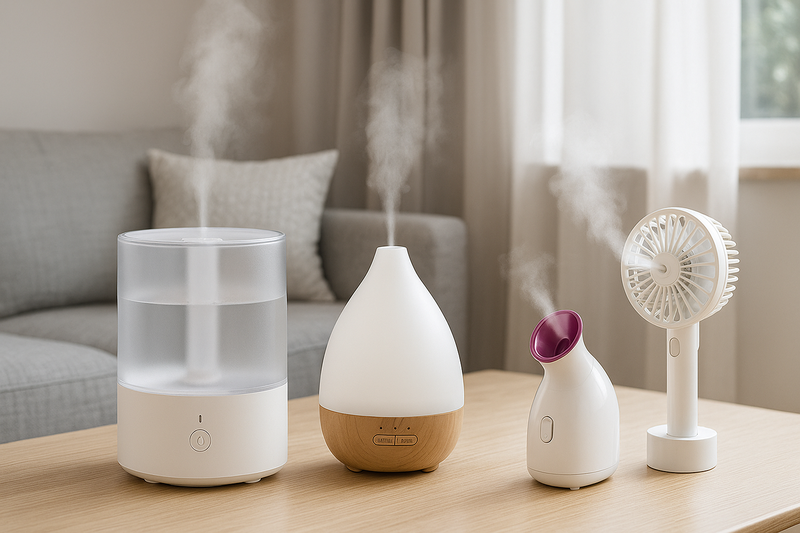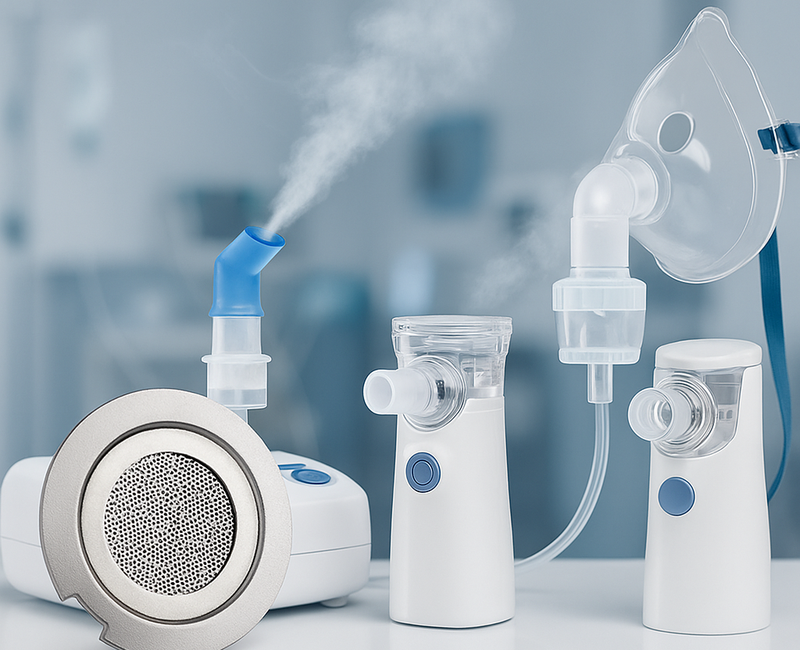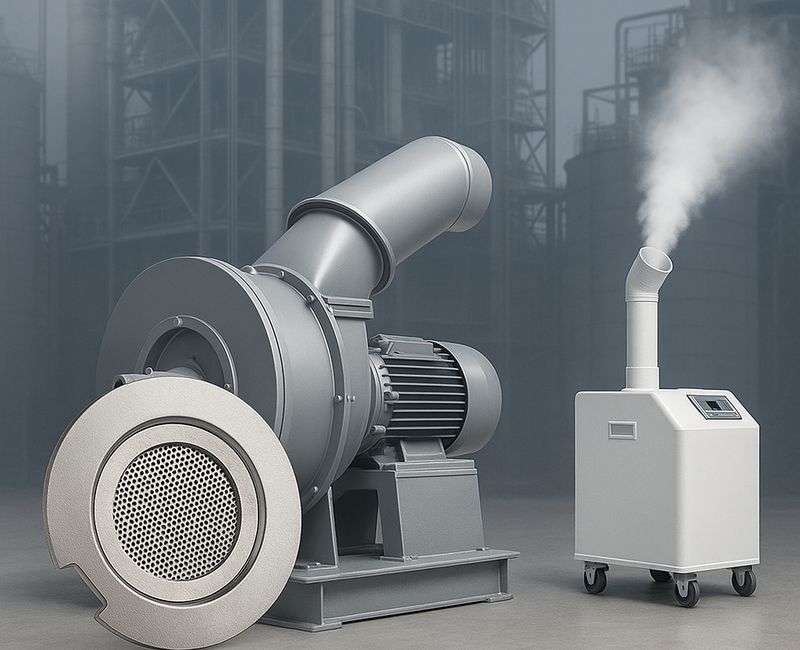Mesh-Based Atomizers
Applications



FAQ
What is a mesh atomizer?
A mesh atomizer is a thin vibrating membrane with micro-sized holes that turns liquid into a fine mist. It is widely used in humidifiers, aroma diffusers, medical nebulizers, and beauty devices.
How do I choose the right atomizer?
It depends on your application. For medical or pharmaceutical use, select smaller particle sizes (2–5 µm). For home humidifiers or aroma diffusers, 5–10 µm is usually ideal. Contact us if you need guidance.
Are your atomizers safe for medical devices?
Yes, certain models are designed for medical use with strict particle-size control. Please verify product specifications and regulatory compliance in your region.
Do we provide matching driving circuit boards for our atomizers?
Yes! We can provide driving circuit boards for both prototyping and production.
What is the flow rate of your mesh atomizers?
Flow rates vary by model, from 1 ml/min up to over 20 ml/min. Please check the specification sheet for each product.
Are your atomizers compatible with all liquids?
They work best with purified water and most water-based solutions. High-viscosity liquids, oils, or solutions containing large particles may clog or damage the mesh.
How long does a mesh atomizer last?
Service life depends on usage and care. On average, atomizers last 1,000–5,000 hours. Regular cleaning extends their lifespan.
What is the minimum hole size we can make and its tolerance?
2.5±0.5μm
